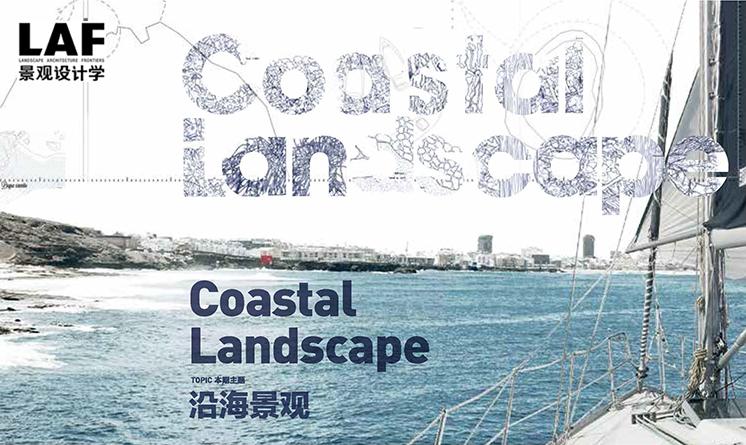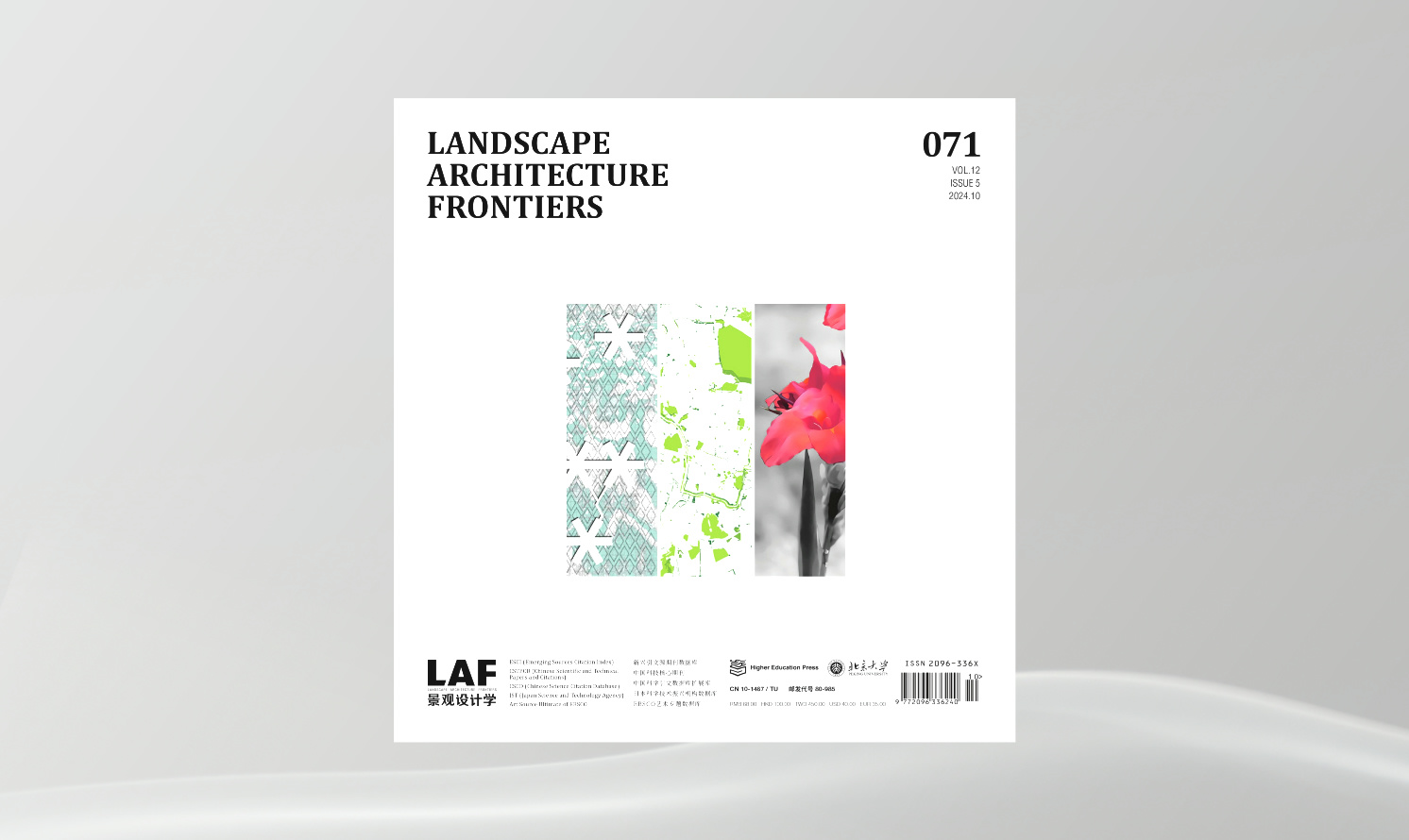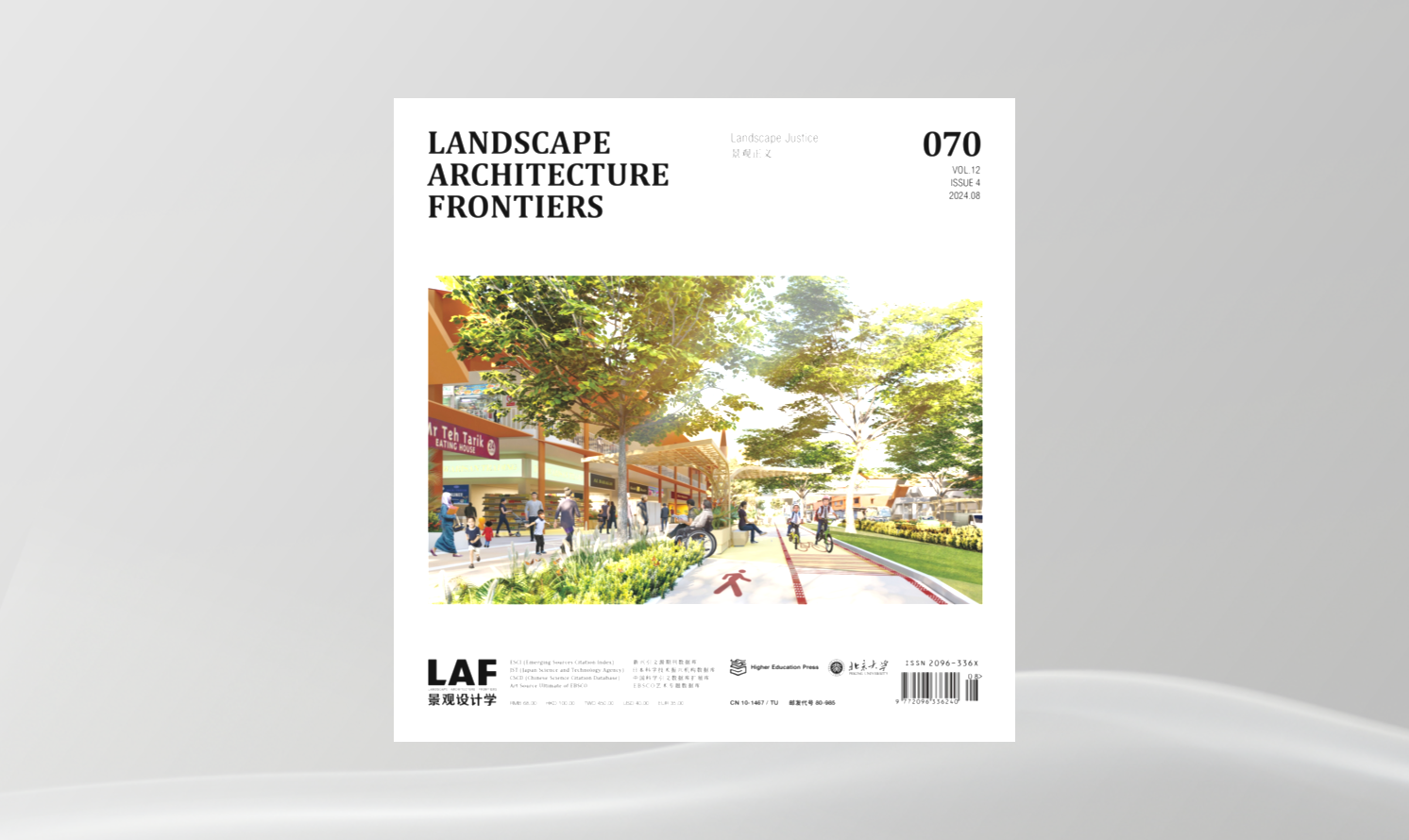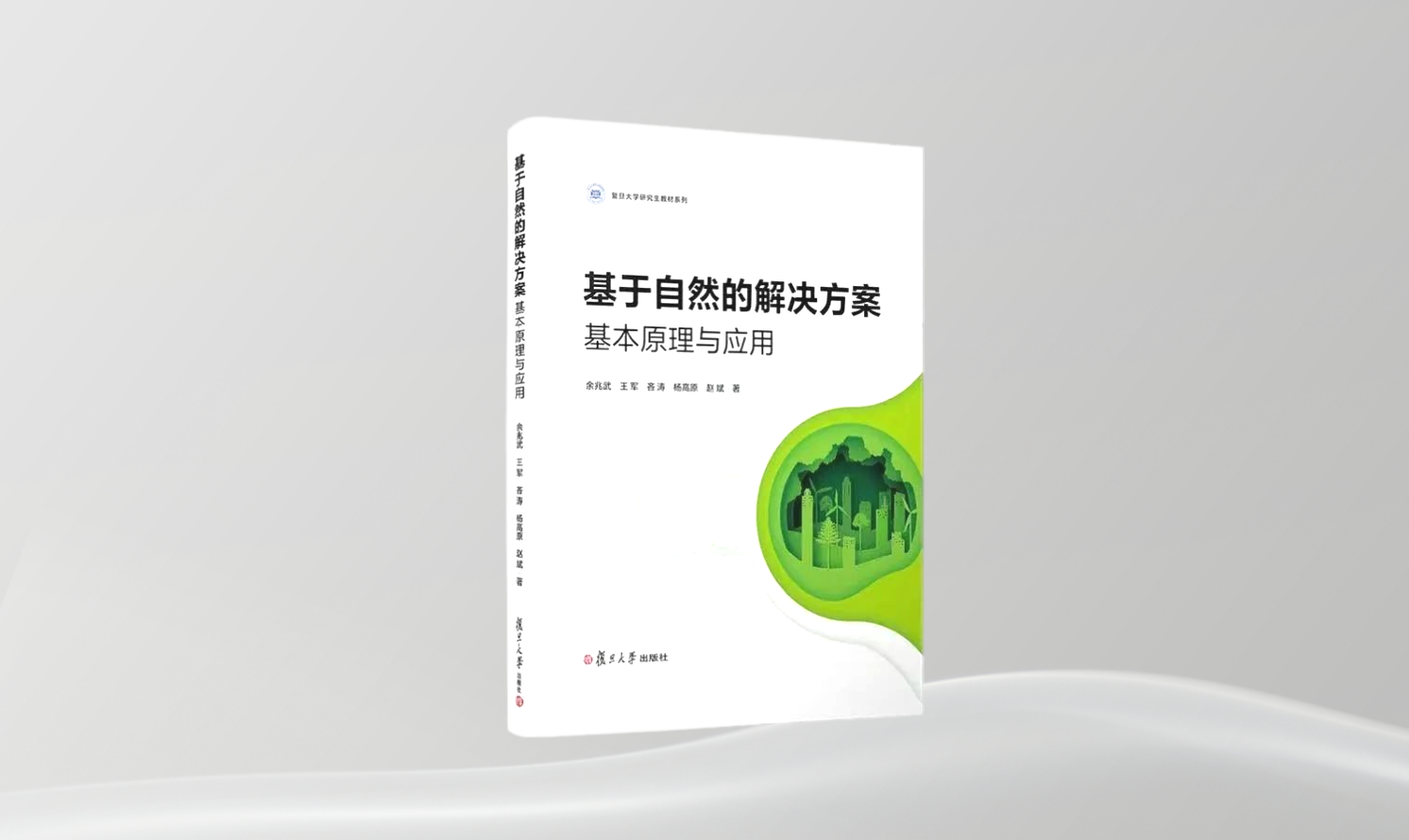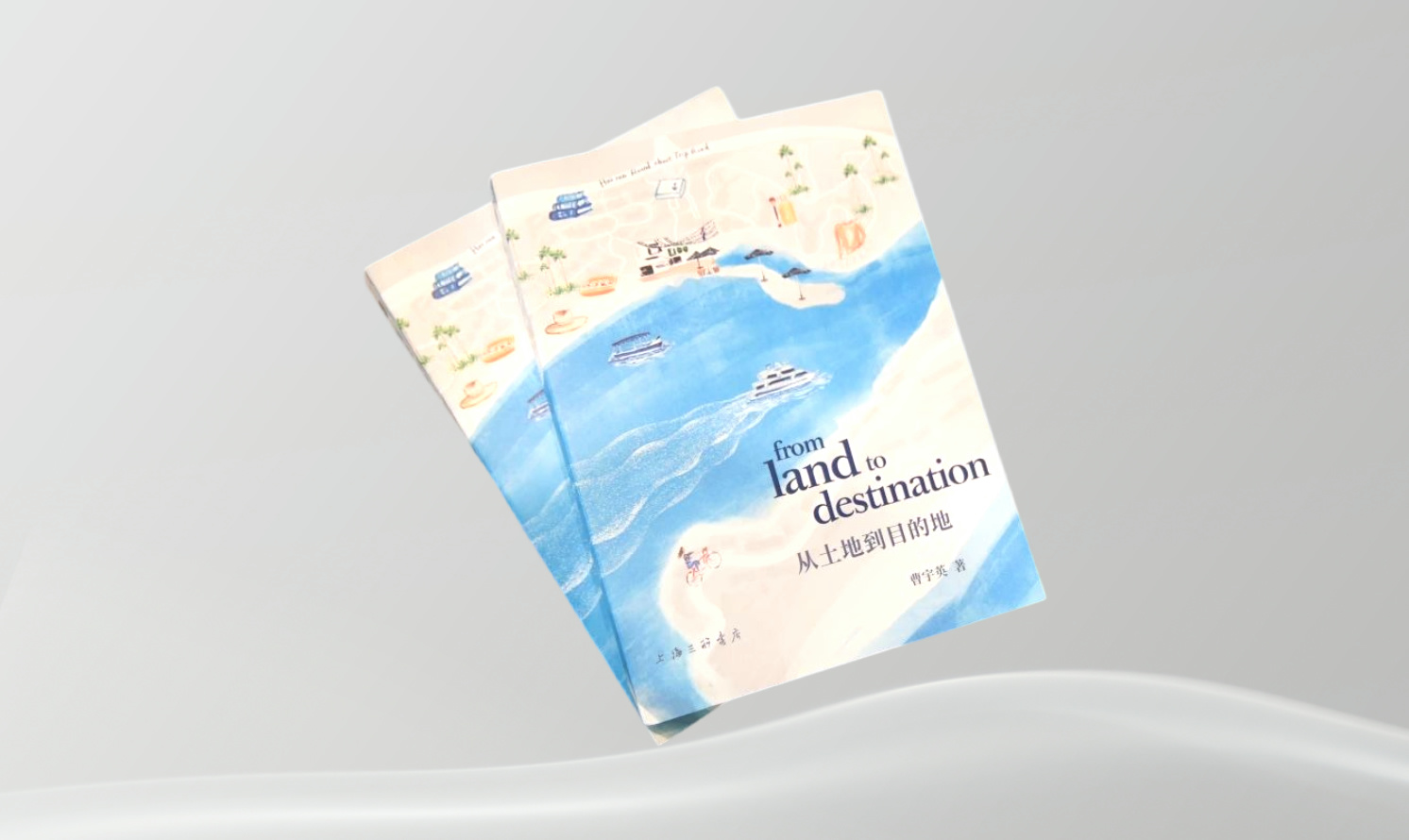適應(yīng)海平面上升的生物多樣性保護(hù)規(guī)劃:美國(guó)佛羅里達(dá)州瓜納-特羅馬特-馬坦薩斯國(guó)家級(jí)河口研究保護(hù)區(qū)案例
Biodiversity Conservation Planning Adaptive to Sea Level Rise: The Case of the Guana Tolomato Matanzas National Estuarine Research Reserve in Florida
作者:祝明建���,奚雪松����,李胭胭 Mingjian ZHU, Xuesong XI, Yanyan LI
摘要
目前����,海平面上升成為了全球沿海低洼地區(qū)生物多樣性保護(hù)最大的威脅之一,為了應(yīng)對(duì)這一挑戰(zhàn)���,我們亟需對(duì)沿海保護(hù)區(qū)加以調(diào)整�����。本文介紹了位于美國(guó)佛羅里達(dá)州的瓜納-特羅馬特-馬坦薩斯國(guó)家級(jí)河口研究保護(hù)區(qū)的案例�����,該項(xiàng)目通過(guò)運(yùn)用綜合保護(hù)規(guī)劃模型來(lái)辨識(shí)適應(yīng)海平面上升的優(yōu)先保護(hù)區(qū)��。結(jié)合美國(guó)案例的經(jīng)驗(yàn)����,本文繼而對(duì)在中國(guó)沿海城市和地區(qū)開(kāi)展適應(yīng)海平面上升的生物多樣性保護(hù)規(guī)劃提出了相關(guān)建議。
關(guān)鍵詞
海平面上升�����;適應(yīng)性規(guī)劃��;生物多樣性��;沿海地區(qū)�����;模擬
Abstract
Currently, sea level rise becomes one of the biggest threats to biodiversity conservation in low-lying coastal areas, and coastal conservation areas need to be optimized to the rising sea level. This paper introduces the case of the Guana Tolomato Matanzas National Estuarine Research Reserve in Florida, which shows that the key conservation areas adaptive to sea level rise can be identified by modeling with integrated protection planning. Combining the American case’s lessons, the paper further comes up with suggestions on biodiversity protection adaptive to sea level rise for china’s coastal cities and regions.
Key words
Sea Level Rise; Adaptive Planning; Biodiversity; Coastal Region; Simulation
變化的氣候與變化的城市設(shè)計(jì)策略
Changing Climate and Changing Strategies for Urban Design
作者:陳顯堯 Xianyao CHEN
摘要
全球氣候變化對(duì)人類(lèi)社會(huì)和經(jīng)濟(jì)建設(shè)產(chǎn)生了廣泛而深刻的影響����。作為氣候變化最顯著的特征之一��,海平面上升會(huì)加劇沿海地區(qū)的風(fēng)暴潮、海岸侵蝕���、海水入侵等海洋災(zāi)害的發(fā)生����,嚴(yán)重威脅沿海地區(qū)的社會(huì)經(jīng)濟(jì)發(fā)展�����。本次受訪者為全球氣候變化領(lǐng)域的專(zhuān)家�����,其在訪談中指出海洋在全球氣候系統(tǒng)中占據(jù)主導(dǎo)地位��,在全球氣候變化過(guò)程中亦發(fā)揮著重要作用��,并進(jìn)一步分析了全球海平面上升的非同步性和非平均性����。受訪者指出全球氣候變化的基礎(chǔ)研究成果還有待轉(zhuǎn)換到氣候?qū)W、災(zāi)害預(yù)報(bào)與防控��、城市規(guī)劃與設(shè)計(jì)等應(yīng)用學(xué)科領(lǐng)域,以為沿海地區(qū)城市建設(shè)的風(fēng)險(xiǎn)評(píng)估和管理提供指導(dǎo)��。
關(guān)鍵詞
海洋�����;全球氣候變化�����;海平面上升����;城市設(shè)計(jì)
Abstract
Global climate change has a broad and profound impact on human social and economic development. As one of the most distinguishing observations of climate change, sea level rise exacerbates marine disasters such as storm surge, coastal erosion, and seawater intrusion, which threaten the socio-economic development of coastal areas. As an expert on global climate change, the interviewee noted that ocean plays an absolutely dominant role in global climate system, and further emphasized the non-synchronicity and non-uniformity of global sea level rise. He also pointed out that basic research on global climate change needs to be more extensively applied in climatology, disaster prediction and control, urban planning and design, and other disciplines, in order to provide scientific support on risk assessment and management for urban construction of coastal regions.
Key words
Ocean; Global Climate Change; Sea Level Rise; Urban Design
中國(guó)沿海地區(qū)生態(tài)環(huán)境現(xiàn)狀與保護(hù)
Ecological Situation and Protection of China’s Coastal Areas
作者:李國(guó)勝 Guosheng LI
摘要
近幾十年來(lái),隨著沿海地區(qū)人類(lèi)活動(dòng)(例如城鎮(zhèn)化����、圍墾���、人工養(yǎng)殖��、固灘���、石油開(kāi)采等)強(qiáng)度的逐漸增加,中國(guó)海岸帶的自然岸線在逐年減少,人工海岸比例已超過(guò)40%����。這種人工化的高強(qiáng)度開(kāi)發(fā)對(duì)海岸帶自然景觀和生態(tài)環(huán)境造成了強(qiáng)烈干擾。該訪談介紹了目前中國(guó)海岸帶生態(tài)環(huán)境的整體狀況����,以及近年來(lái)幾大三角洲自然景觀和生態(tài)環(huán)境的轉(zhuǎn)變,強(qiáng)調(diào)了沿海地區(qū)應(yīng)在經(jīng)濟(jì)發(fā)展與環(huán)境保護(hù)之間尋求平衡����,并應(yīng)針對(duì)全球氣候變暖、海平面上升等問(wèn)題�����,展開(kāi)全國(guó)尺度的海岸帶生態(tài)監(jiān)測(cè)與評(píng)估���。
關(guān)鍵詞
海岸帶����;中國(guó)�����;三角洲;圍墾�����;生態(tài)保護(hù)
Abstract
As coastal urbanization, reclamation, aquaculture, shoal-reinforcement, and oil exploitation have intensified over the past few decades, China’s natural coastline has shrunk. The man-made coastline now accounts for more than 40% of the total national coastline. Such intensive development has disturbed the natural landscape and ecosystem of the coastal zones. This interview introduces the overall ecological situation of China’s coastal areas including changes in the major delta areas of China. It stresses that development of coastal areas should be coordinated to best balance economic growth and ecological protection. It encourages the establishment of a nation-wide ecological monitoring and assessment mechanism that will help respond to pressing issues including climate change and sea level rise.
Key words
Coastal Zone; China; Delta; Reclamation; Ecological Protection
21世紀(jì)海上絲綢之路對(duì)中國(guó)沿海城市的影響
The Impacts of the 21st Century Maritime Silk Road on Chinese Coastal Cities
作者:劉?����??Baokui LIU
摘要
自2013年習(xí)近平主席提出“21世紀(jì)海上絲綢之路”的構(gòu)想以來(lái)��,一系列相關(guān)政策的出臺(tái)對(duì)中國(guó)沿海城鎮(zhèn)的發(fā)展產(chǎn)生了深遠(yuǎn)影響��。21世紀(jì)海上絲綢之路是一個(gè)沒(méi)有限定邊界的互利共贏�����、開(kāi)放包容的新型合作平臺(tái)���,將以點(diǎn)(城市和港口)帶面����,從線到片�����,逐步形成區(qū)域大合作��。21世紀(jì)海上絲綢之路為沿海地區(qū)的發(fā)展帶來(lái)了新動(dòng)力��,激發(fā)著區(qū)域集聚態(tài)勢(shì)����、產(chǎn)業(yè)組織模式、人口流動(dòng)趨勢(shì)��、生態(tài)保護(hù)形勢(shì)等方面發(fā)生深刻變化���。
關(guān)鍵詞
沿海城市�����;城市群��;產(chǎn)業(yè)�����;人口流動(dòng)���;沿海生態(tài)
Abstract
Since the introduction of the 21st Century Maritime Silk Road initiative by President Xi Jinping in 2013, a series of relevant policies have profoundly influenced the development of coastal cities in China. The 21st Century Maritime Silk Road promises an open and inclusive new cooperation platform. It will help form a regional cooperation, which is driven by the key coastal cities and coastal economic zones. The 21st Century Maritime Silk Road brings new impetus to the development of coastal areas, leading to profound changes in regional agglomeration, industrial organization patterns, population migration, ecological protection, and other aspects.
Key words
Coastal City; Urban Agglomeration; Industry; Population Migration; Coastal Ecology
應(yīng)對(duì)氣候變化的沿海社區(qū)與生態(tài)系統(tǒng)彈性設(shè)計(jì)
The Design of Resilient Coastal Communities and Ecosystems Responding to Climate Changes
作者:杰弗里?卡尼 Jeffery CARNEY
摘要
近年來(lái)��,風(fēng)暴���、土地流失、海平面上升等問(wèn)題頻發(fā)�����,沿海地區(qū)面臨著日益嚴(yán)峻的挑戰(zhàn)�����。路易斯安那州立大學(xué)沿海地區(qū)可持續(xù)性研究所(CSS)自2009年成立以來(lái)便致力于通過(guò)創(chuàng)新策略提升沿海社區(qū)與生態(tài)系統(tǒng)的彈性����。本次采訪聚焦于CSS的團(tuán)隊(duì)建設(shè)方式、跨學(xué)科協(xié)作�����,以及沿海區(qū)域大尺度規(guī)劃設(shè)計(jì)策略等方面����。CSS負(fù)責(zé)人杰弗里?卡尼提出,氣候變化已成為沿海社區(qū)規(guī)劃設(shè)計(jì)中的重要考慮因素�����,其影響甚至涵蓋內(nèi)陸地區(qū)����,因而迫切需要正視這一全球性問(wèn)題?�?嵴J(rèn)為���,景觀設(shè)計(jì)師的基本職責(zé)就是探索如何將復(fù)雜的生態(tài)系統(tǒng)融入人類(lèi)環(huán)境之中��,唯有運(yùn)用系統(tǒng)性思維以及促進(jìn)各方協(xié)作��,才能實(shí)現(xiàn)更加富有成效且更具責(zé)任感的設(shè)計(jì)和發(fā)展建設(shè)��。
關(guān)鍵詞
沿海地區(qū)可持續(xù)性研究所�����;海岸修復(fù)�����;沿海生態(tài)系統(tǒng)保護(hù)����;氣候變化;協(xié)作
Abstract
In recent years, challenges of storms, land loss and sea level rise are getting more and more serious in the coastal areas. Since its founding in 2009, the Coastal Sustainability Studio (CSS) of Louisiana State University has been trying to use innovative approaches to foster resilient coastal communities and ecosystems. This interview focuses on CSS’s way of building teams, transdisciplinary collaboration, and their practices on large-scale planning in coastal areas, etc. As is stated by Jeffery Carney, director of CSS, climate change is increasingly recognized as a huge factor in coastal community design and is affecting inland regions as well, which has become a global issue to be seriously concerned. Carney also suggests that it is the duty of landscape architects to put the complexities of the ecosystem into a human context. Only with the application of systems thinking and with collaboration with a diverse team, can we realize design and development in productive and responsible ways.
Key words
Coastal Sustainability Studio; Coastal Restoration; Coastal Ecosystem Preservation; Climate Changes; Collaboration
2050:能源的征程
2050: An Energetic Odyssey
作者:德克?西蒙茲���,賈斯珀?哈根伯格��,約佩?維爾 Dirk SIJMONS, Jasper HUGTENBURG, Joppe VEUL
摘要
“2050:能源的征程”是一項(xiàng)針對(duì)西歐北海及周邊地區(qū)的設(shè)計(jì)性研究���,主要探究在該區(qū)域大規(guī)模開(kāi)采、運(yùn)輸和儲(chǔ)存可再生能源的可能性���、機(jī)遇和空間影響����。該項(xiàng)目展示了北海在實(shí)現(xiàn)《巴黎協(xié)定》中經(jīng)全球通過(guò)的“將全球平均氣溫較工業(yè)化前水平升高幅度控制在2℃以?xún)?nèi)”的目標(biāo)中扮演的角色�����。
歐洲承諾�����,截至2050年,將實(shí)現(xiàn)溫室氣體減排80%~95%���。受2016年荷蘭鹿特丹國(guó)際建筑雙年展委托�����,H+N+S景觀設(shè)計(jì)事務(wù)所與Ecofys能源與氣候咨詢(xún)公司、Tungsten Pro多媒體制作公司聯(lián)合推出了基于可再生能源利用的北海區(qū)域規(guī)劃����。該規(guī)劃概述出項(xiàng)目未來(lái)可能的實(shí)際情況,及其對(duì)自然����、漁業(yè)、港口發(fā)展����、經(jīng)濟(jì)和娛樂(lè)休閑的影響。
關(guān)鍵詞
北海����;氣候變化;沿海���;能源���;海上風(fēng)能
Abstract
“2050: An Energetic Odyssey” is a research by design on the possibilities, opportunities, and spatial implications of the realisation of large-scale harvesting, transportation and storage of renewable energy sources on and around the North Sea. This project demonstrates the role the North Sea could play in meeting the globally agreed two-degree target.
Europe has committed to reducing greenhouse gas emissions by 2050 by 80% ~ 95%. Commissioned by the Internationale Architectuur Biennale Rotterdam 2016 (IABR 2016), H+N+S made a plan for the North Sea together with Ecofys and Tungsten Pro, in which renewable energy sources are utilised. This plan outlines how that might look in practical terms and what the effects might be for nature, fishery, harbour development, economies, and recreation.
Key words
North Sea; Climate Change; Coastal; Energy; Offshore Wind
動(dòng)態(tài)景觀的適應(yīng)性規(guī)劃:阿拉巴馬州海灣州立公園總體規(guī)劃
Adaptive Planning for a Dynamic Landscape: Alabama’s Gulf State Park Master Plan
作者:吉娜?福特���,詹姆斯?邁納 Gina FORD, James MINER
摘要
墨西哥灣州立公園總體規(guī)劃是對(duì)于阿拉巴馬海岸一處面積約25km2的公園提出的戰(zhàn)略框架,旨在為日益復(fù)雜的環(huán)境提出新的開(kāi)發(fā)模式�����。通過(guò)整合動(dòng)態(tài)景觀��、新興的適應(yīng)性管理技術(shù)與包含早期行動(dòng)計(jì)劃的規(guī)劃過(guò)程�����,該項(xiàng)目提出了一項(xiàng)新型總體規(guī)劃�����,其實(shí)施計(jì)劃和戰(zhàn)略規(guī)劃并存��,且實(shí)時(shí)相互反饋���。本文將討論總體規(guī)劃的框架和愿景����、審查早期行動(dòng)要素,同時(shí)闡釋參與式規(guī)劃與設(shè)計(jì)的價(jià)值�����。
關(guān)鍵詞
彈性�����;總體規(guī)劃��;沿海���;公園;生態(tài)
Abstract
The Gulf State Park Master Plan — a strategic framework for this beloved 6,150-acre park in coastal Alabama — offers a new model for addressing increasingly complex environments. The dynamism of the landscape, its context of emerging adaptive management techniques, and the need to accommodate built-in early action strategies allowed for a new kind of master plan, one where implementation and strategy co-existed and informed one another in real-time. We provide an overview of the master plan vision, examine its early action elements, and explain the value of engaging in planning and design implementation concurrently.
Key words
Resilience; Master Planning; Coastal; Park; Ecology
候鳥(niǎo)機(jī)場(chǎng)——天津臨港經(jīng)濟(jì)開(kāi)發(fā)區(qū)鳥(niǎo)類(lèi)保護(hù)濕地公園項(xiàng)目設(shè)計(jì)
Bird Airport — Tianjin Lingang Bird Sanctuary Wetland Park Design
作者:McGregor Coxall設(shè)計(jì)事務(wù)所 McGregor Coxall
摘要
東亞-澳大利西亞候鳥(niǎo)遷飛區(qū)(EAAF)是全球九大貫穿南北半球的候鳥(niǎo)遷飛區(qū)之一����,每年都有全球五分之一的瀕危水鳥(niǎo)在這條遷飛區(qū)上飛行。 在沿海地區(qū)城市蓬勃發(fā)展的大環(huán)境下�����,鳥(niǎo)類(lèi)棲息地與覓食場(chǎng)地逐漸消失����,鳥(niǎo)類(lèi)數(shù)量急劇下降�����。為了增加中國(guó)渤海灣核心鳥(niǎo)類(lèi)棲息地的數(shù)量���,McGregor Coxall設(shè)計(jì)事務(wù)所計(jì)劃在臨港經(jīng)濟(jì)開(kāi)發(fā)區(qū)的一塊填海圍墾地上建立一處110hm2的鳥(niǎo)類(lèi)保護(hù)濕地公園,并提出世界上首個(gè)“候鳥(niǎo)機(jī)場(chǎng)”設(shè)計(jì)��。由于部分鳥(niǎo)類(lèi)在遷飛途中會(huì)不間斷飛行超過(guò)11 000km����、長(zhǎng)達(dá)10天不進(jìn)食飲水,位于渤海灣上的“候鳥(niǎo)機(jī)場(chǎng)”將是EAAF上鳥(niǎo)類(lèi)進(jìn)行補(bǔ)給和繁衍的至關(guān)重要的一站����,對(duì)中國(guó)、澳大利亞����,乃至全球生態(tài)系統(tǒng)具有重要意義。
關(guān)鍵詞
候鳥(niǎo)機(jī)場(chǎng)�����;東亞-澳大利西亞候鳥(niǎo)遷飛區(qū);沿海景觀���;濕地����;自然教育
Abstract
Each year more than 50 million birds make the return journey from the Antarctic reaches to the northern tip of the earth along the East Asian-Australasian Flyway (EAAF) seeking food and shelter. As one of the nine global north-south fly ways, the EAAF is now the world’s most threatened due to the loss of bird foraging habitat by coastal urbanization. One in five globally threatened water birds including the Black-Tailed Godwit fly the EAAF but they are suffering rapid declines in population.
In a bid to increase critical bird habitat on the shores of the Bohai Bay in China, the Asian Development Bank encouraged the Port of Tianjin to embark upon an international design competition for a wetland bird sanctuary on a degraded land fill site in Lingang. McGregor Coxall won the first prize in the competition with a proposal of establishing the world’s first migratory “Bird Airport” — a 110-hectare wetland park and bird sanctuary. With some birds flying non-stop for more than 11,000 km and up to 10 days without food or water, the airport will be a crucial re-fueling and breeding stop on the EAAF.
Key words
Bird Airport; East Asian-Australasian Flyway; Coastal Landscape; Wetland; Natural Education
有生命的防波堤——紐約沿海綠色基礎(chǔ)設(shè)施
Living Breakwaters — Coastal Infrastructure in New York
作者:SCAPE景觀設(shè)計(jì)公司 SCAPE Landscape Architecture DPC
摘要
我們?nèi)绾螌⒐娕c其所處環(huán)境更直接地聯(lián)系起來(lái)����?我們?nèi)绾卧陬A(yù)測(cè)海平面上升和日益頻發(fā)的風(fēng)暴的同時(shí)修復(fù)水體,并將人們與海岸相連�����?“有生命的防波堤”是一個(gè)創(chuàng)新性的沿海綠色基礎(chǔ)設(shè)施項(xiàng)目����,是美國(guó)住房和城市發(fā)展部“為重建而設(shè)計(jì)”競(jìng)賽的獲獎(jiǎng)項(xiàng)目之一����,意在為上述問(wèn)題提供解決方案。該項(xiàng)目由紐約州政府風(fēng)暴災(zāi)后恢復(fù)辦公室實(shí)施����,并獲得了6 000萬(wàn)美元的社區(qū)發(fā)展補(bǔ)助災(zāi)后恢復(fù)專(zhuān)項(xiàng)資金��?����!坝猩姆啦ǖ獭表?xiàng)目為拉里坦灣和斯塔滕島量身設(shè)計(jì)����,將水上基礎(chǔ)設(shè)施與在岸教育和外展服務(wù)相結(jié)合��,有助于降低災(zāi)害風(fēng)險(xiǎn)����、提高生態(tài)系統(tǒng)穩(wěn)定性,同時(shí)促進(jìn)管理能力的培養(yǎng)��。
關(guān)鍵詞
生態(tài)設(shè)計(jì)����;降低災(zāi)害風(fēng)險(xiǎn);沿?����;A(chǔ)設(shè)施���;公眾參與���;濱水區(qū)�����;彈性
Abstract
How can we connect citizens more directly with their immediate environment? How can we anticipate rising sea levels and increasingly intense storms, but also revive waterbodies, and connect people to the shore? Living Breakwaters is an innovative coastal green infrastructure project that was selected as one of the winning projects of the U.S. Department of Housing and Urban Development (HUD) Rebuild by Design competition that aims to answer these questions. The project is being implemented by the New York State Governor’s Office of Storm Recovery with 60 million USD of Community Development Block Grant Disaster Recovery (CDBG-DR) funding. Planned for the Raritan Bay and Staten Island, Living Breakwaters links in-water infrastructure with on-shore education and outreach, to help reduce risk, enhance ecosystems and foster stewardship.
Key words
Ecological Design; Risk Reduction; Coastal Infrastructure; Civic Engagement; Waterfront; Resiliency
重返大海:西班牙基爾馬斯水產(chǎn)景觀修復(fù)
Embracing Rías: Recovering the Aqua-scape in Quilmas, Spain
作者:邢曉曄 Xiaoye Xing
摘要
西班牙西海岸加利西亞地區(qū)擁有綿長(zhǎng)曲折的海岸線和眾多入?����?谌侵?��,漁業(yè)與水產(chǎn)養(yǎng)殖業(yè)一直以來(lái)都是當(dāng)?shù)刂饕闹еa(chǎn)業(yè)?����;鶢栺R斯是坐落于這一地區(qū)海岸線上的僅有170名居民的小鎮(zhèn)��,風(fēng)景優(yōu)美�����,生物種類(lèi)豐富��,有著悠久的漁業(yè)歷史��。但由于交通不便�����,近年來(lái)基爾馬斯的旅游業(yè)并沒(méi)有得到長(zhǎng)足發(fā)展���。一座巨大的多寶魚(yú)養(yǎng)殖場(chǎng)占領(lǐng)了二分之一的海岸��,不僅成為生態(tài)環(huán)境的潛在威脅���,且未能為當(dāng)?shù)靥峁└嗟墓ぷ鲘徫弧pB(yǎng)殖場(chǎng)意圖在基爾馬斯繼續(xù)擴(kuò)張���,借此機(jī)會(huì)����,當(dāng)?shù)卣c其簽訂了合作協(xié)議�����,要求養(yǎng)殖場(chǎng)必須部分投入公共空間建設(shè)��,才能夠獲得擴(kuò)張的許可。該項(xiàng)目以促進(jìn)養(yǎng)殖場(chǎng)轉(zhuǎn)型成環(huán)境友好型企業(yè)為出發(fā)點(diǎn)�����,探索了經(jīng)濟(jì)�����、生態(tài)與景觀并行的水產(chǎn)景觀形式�����,并將文化遺產(chǎn)與自然遺產(chǎn)相結(jié)合�����,從而促進(jìn)基爾馬斯旅游觀光產(chǎn)業(yè)的發(fā)展�����。
關(guān)鍵詞
水產(chǎn)養(yǎng)殖���;水產(chǎn)景觀;多營(yíng)養(yǎng)層級(jí)綜合養(yǎng)殖系統(tǒng)���;海岸
Abstract
The Galician Coast, located in the west coast of Spain, is characterized by the long, sinuous coastline with complex hydrological configuration, where fishery and aquaculture are the pillar industry. Quilmas is a small village of only 170 inhabitants on the coastline. Though with a long history of aquaculture and beautiful natural scenery, tourism is not well developed here due to limited transportation. However, an alien turbot farm dominants half of the shoreline in Quilmas, becoming the potential threat to local ecosystem, without providing adequate job opportunities. The farm still intends to expand in Quilmas. Thus the municipal made the best of this chance and reached an agreement that the farm has to partially devote to public space to get the permission. This project starts with transforming the farm to an eco-friendly plant, and aims to establish various aqua-scape typologies that integrate economics, ecology and landscape, and also to stimulate tourism by integrating cultural heritage and natural heritage.
Key words
Aquaculture; Aqua-scape; Integrated Multi-tropic Aquaculture System; Coast
潮升:邊界抗?fàn)幹改?br/>Rise: A Guide to Boundary Resistance
作者:亞歷桑德拉?梅 Alexandra MEI
摘要
指南特有的形式展現(xiàn)出景觀設(shè)計(jì)作為一種具有包容性���、分享性以及社會(huì)參與性實(shí)踐的潛能�����。在這一項(xiàng)目中�����,指南成為美國(guó)原住民沿海社區(qū)挑戰(zhàn)由美國(guó)陸軍工程兵團(tuán)為島嶼劃定的邊界線的媒介�����。由于海平面上升����,聚居于美國(guó)路易斯安那州讓-查爾斯島上的比洛克西-奇蒂馬查-喬克托部落���,被迫離開(kāi)他們長(zhǎng)期棲居的島嶼�����,到北方更遠(yuǎn)的內(nèi)陸尋找新的安身之所���?���?紤]到未來(lái)50年間平均高水位標(biāo)記值將隨海平面上升而逐漸升高��,島嶼可能會(huì)漸漸轉(zhuǎn)變?yōu)閲?guó)有資產(chǎn)���,而島民則會(huì)失去對(duì)其的所有權(quán)���。為了應(yīng)對(duì)這一問(wèn)題,項(xiàng)目以指南的形式�����,建議島嶼原住民采取行動(dòng)抵抗用于劃定島嶼邊界的現(xiàn)有高水位標(biāo)記方式����,通過(guò)遮蔽與模糊島嶼邊界來(lái)維護(hù)部落對(duì)其土地的所有權(quán),使部落居民遷離該島后依舊可以返回這片曾經(jīng)的家園���。通過(guò)仔細(xì)斟酌表現(xiàn)形式����、靈活把控設(shè)計(jì)過(guò)程���,該項(xiàng)目探討了社區(qū)����、抗?fàn)幰约啊盀樗咴O(shè)計(jì)”等議題�����。在該項(xiàng)目中�����,景觀設(shè)計(jì)使我們得以對(duì)土地邊界線的劃定過(guò)程展開(kāi)批判性審視����,指南的應(yīng)用則有助于將島民及其智慧納入設(shè)計(jì)過(guò)程中。
關(guān)鍵詞
邊界�����;社區(qū)�����;參與性;施為者���;身份認(rèn)同
Abstract
The format of the guidebook carries potential for landscape architecture as a practice of inclusion, participation and social engagement. Here, the guidebook is a medium for a native American coastal community to challenge the boundary lines placed onto its island by the Army Corps of Engineers. The Biloxi Chitimacha Choctaw tribe on the Isle de Jean Charles, Louisiana, forced to leave their island for a land-locked parcel farther north because of sea level rise, will eventually lose their island to state property as this mark rises with the sea in the next fifty years. In response, the project uses the guidebook to suggest acts of community resistance against this water mark, obscuring and blurring the boundary so that the tribe will maintain ownership of their land and have a reason to return after they leave. Through conscious choice of representation style and sensitivity to the process of design, the project provoked questions of community, resistance, and “design for the other.” Here, the role of landscape architecture is critical of the boundaries placed onto land, and the uses of the guidebook can help to embrace community engagement and agency.
Key words
Boundary; Community; Participation; Agency; Identity
重拾地理氛圍
[Re]Learning Geographical Atmospheres
作者:大衛(wèi)?德?tīng)?沃爾斯 David del VALLS
摘要
不同于當(dāng)前的建筑實(shí)踐��,本項(xiàng)目更類(lèi)似于一種大型的研究調(diào)查����,通過(guò)一種基于制圖研究的個(gè)人化手法來(lái)構(gòu)想場(chǎng)域特定藝術(shù)����。漁業(yè)傳統(tǒng)悠久的伊斯雷塔是一個(gè)存在于城市、地域及景觀等定義之間����、邊界模糊不清的小型社區(qū)。當(dāng)?shù)匕l(fā)展受到康菲達(dá)爾海灣保護(hù)區(qū)和拉斯帕爾瑪斯市域的約束��,居民依賴(lài)有限的環(huán)境資源勉強(qiáng)糊口��。我們不僅身處于“環(huán)境”之中�����,亦依賴(lài)“環(huán)境”維持生存。事實(shí)上���,“環(huán)境”通常并非是由邊界明確的具有連續(xù)性的空間�����,而是由諸多片段、碎片或分散的地塊組成��。這些片段承載著人們對(duì)于伊斯雷塔社區(qū)���、對(duì)于拉斯帕爾瑪斯這座城市��,以及對(duì)于當(dāng)?shù)鼐坝^的情感����,講述著這片海岸的往昔歷史與悠悠鄉(xiāng)愁����。本項(xiàng)目聚焦于這些碎片空間和構(gòu)成地域景觀的古老元素,試圖以一種最小干預(yù)的方式將所有物質(zhì)化元素通過(guò)去物質(zhì)化的途徑融入當(dāng)?shù)鼐坝^���,從而與整個(gè)地域建立起一種對(duì)話��。
關(guān)鍵詞
景觀��;遺產(chǎn)���;海岸線��;氛圍�����;領(lǐng)域�����;環(huán)境
Abstract
Different from current architectural practice, this project emerged in parallel to a larger research investigation and takes a personal approach to site-specific artistic work through a cartographic exploration. The Isleta is a small fishing neighbourhood located in an undefined space between the city, territory and landscape. A growth limit set by Confital’s protected area and the city of Las Palmas has forced people to live hand to mouth by limiting access to the environment. We immerse ourselves in the environment, but we also need it to survive. It is not continuous, it is made of pieces, fragments, and patchworks. These pieces are the essential parts of the feeling and the life of the neighbourhood, the city, and the landscape, telling stories about the past and nostalgia of the shore. The project looks at these spaces, the landscape of pre-existing elements, and focuses on establishing a dialogue with the whole territory, with all the elements that materialized and dematerializing into the landscape through minimum interventions.
Key words
Landscape; Heritage; Coastline; Atmospheres; Territory; Environment
 京公海網(wǎng)安備 110108000058號(hào)
京公海網(wǎng)安備 110108000058號(hào)
